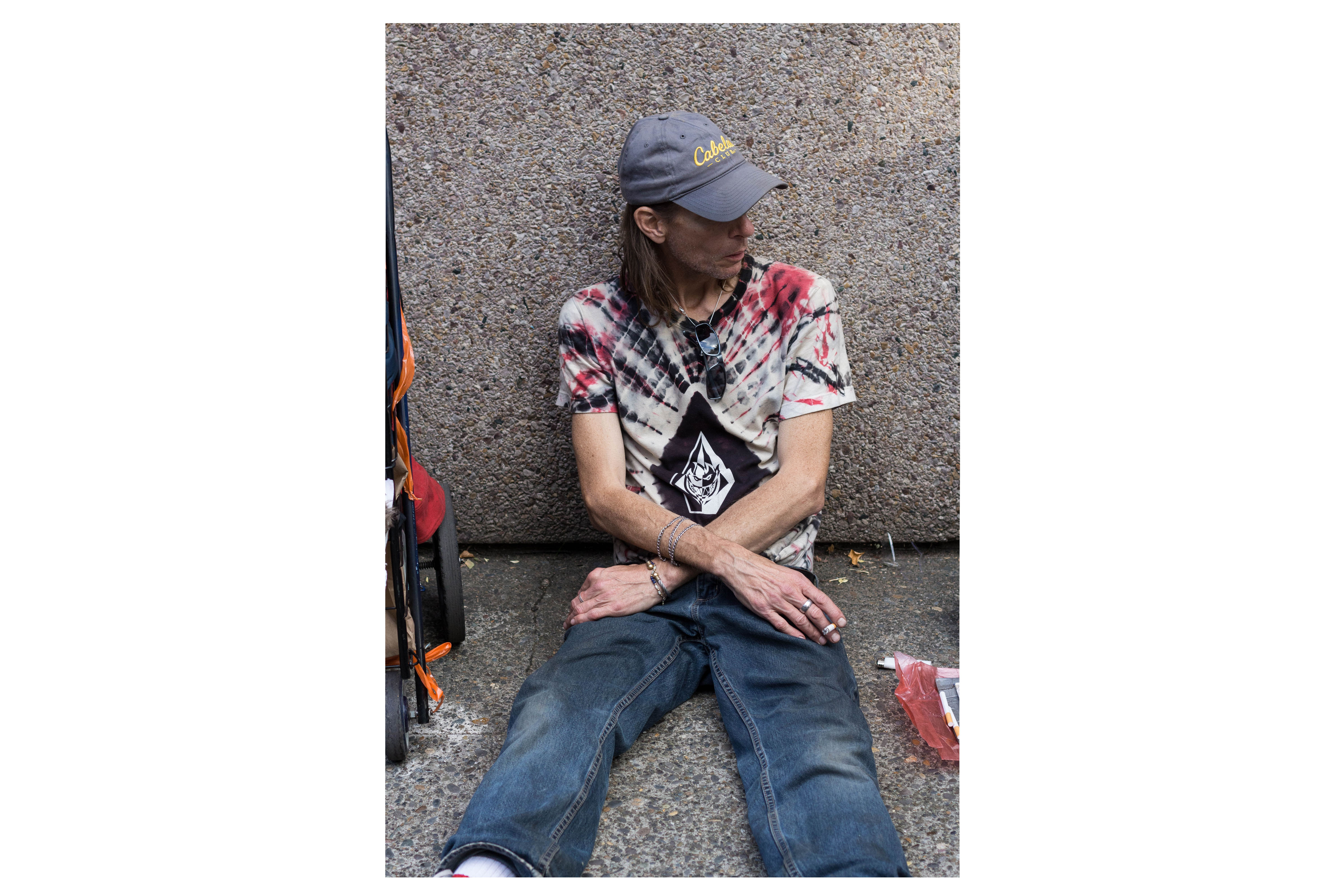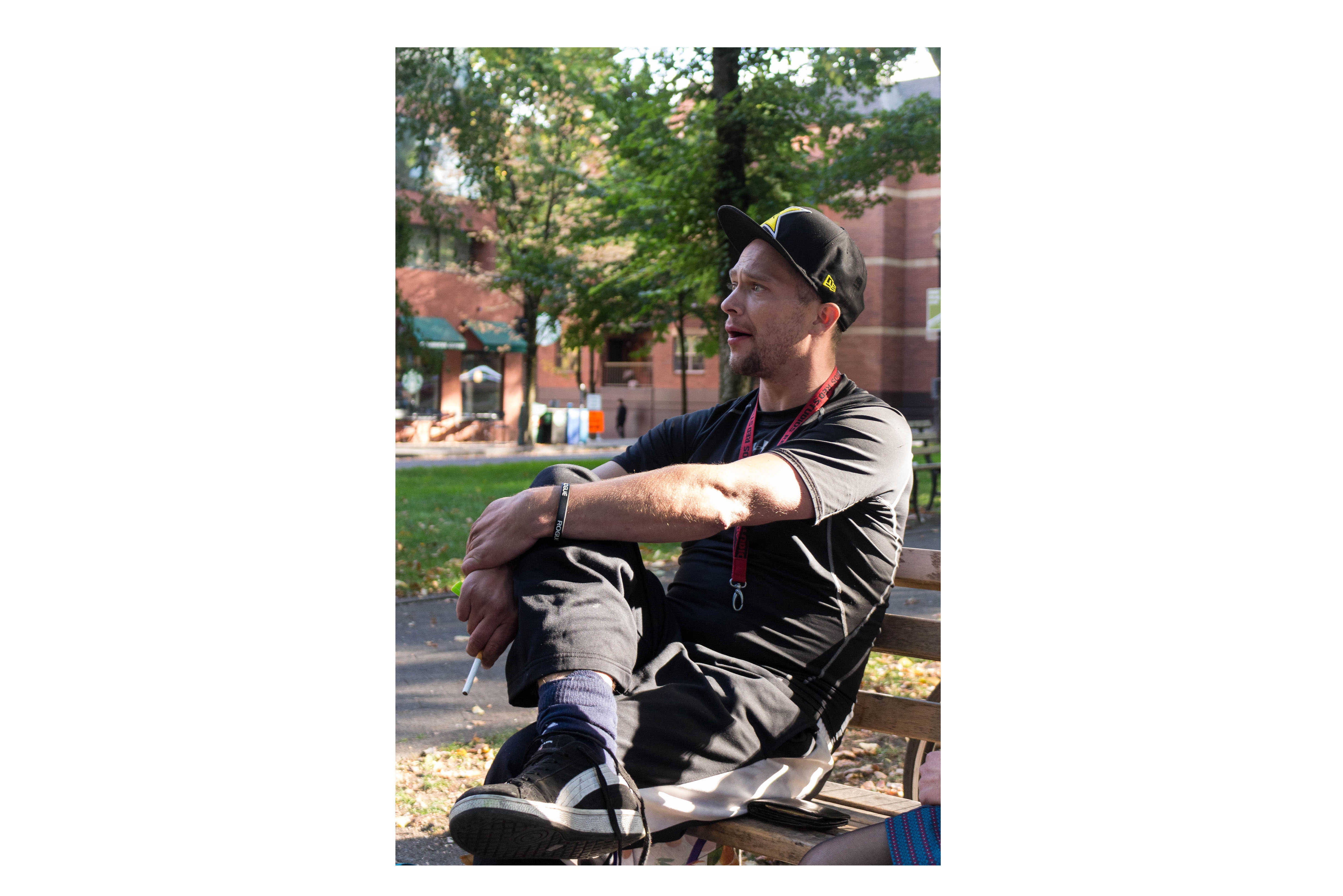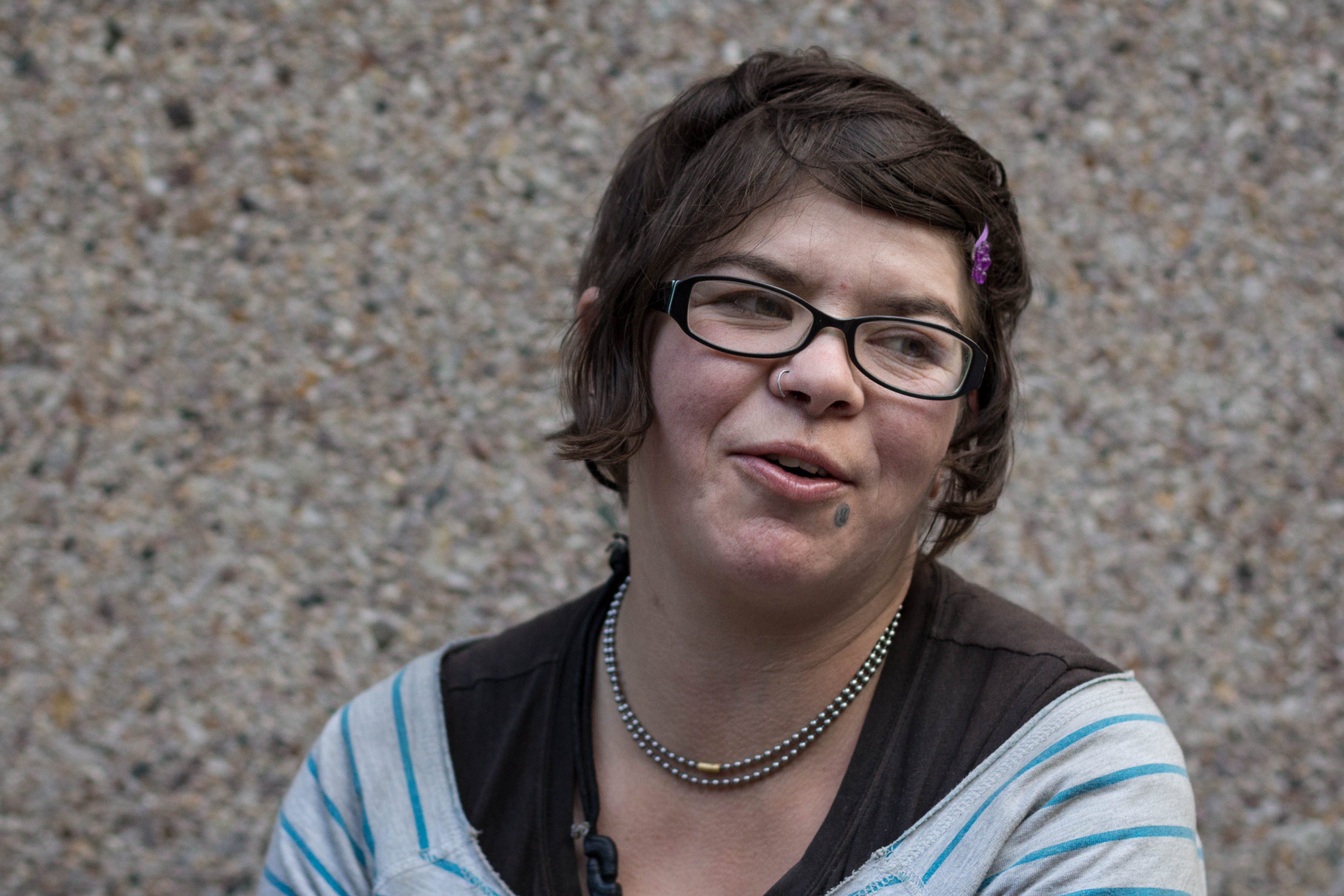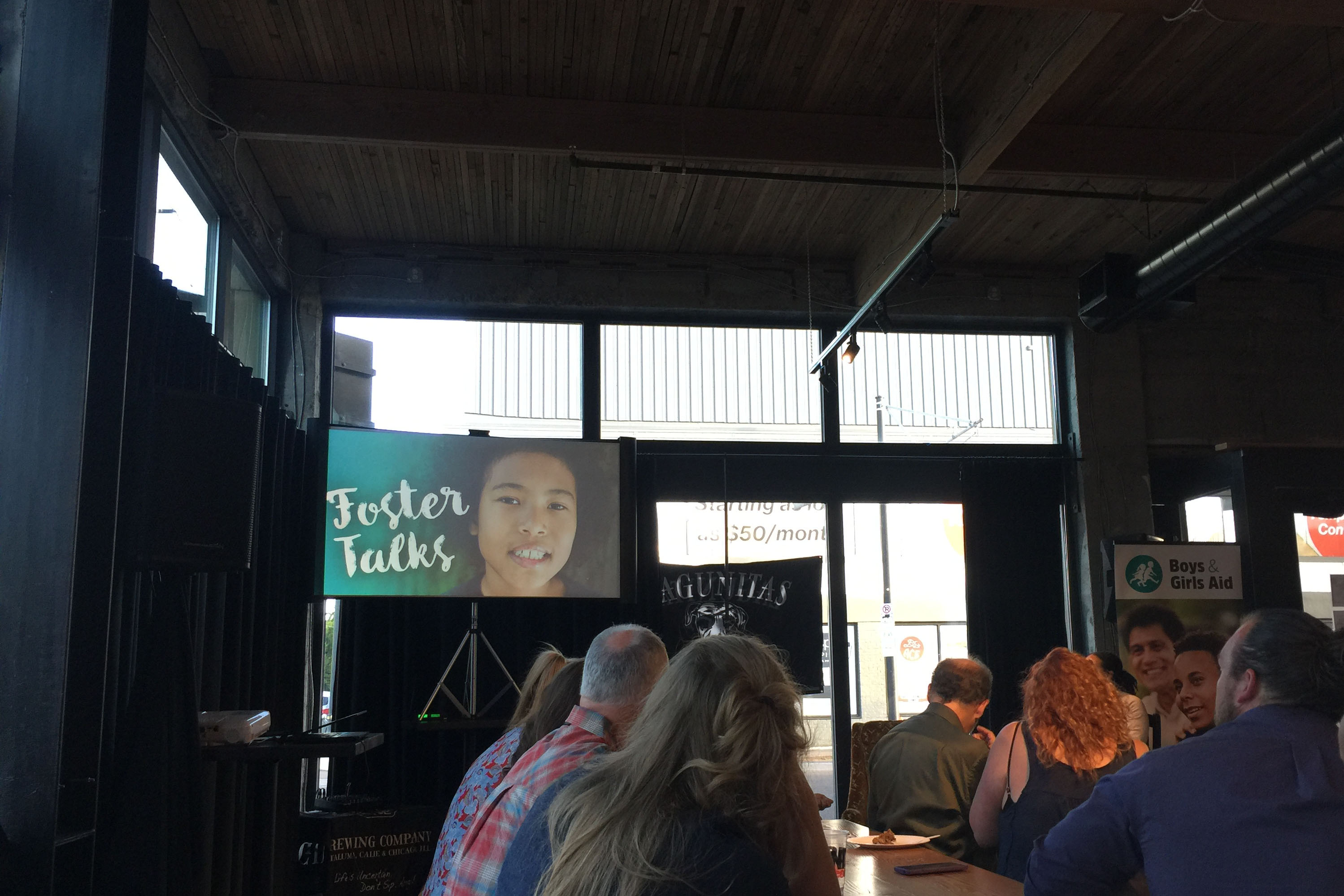Even though he seemed embarrassed by the question, Joe, who is toothpick thin, admitted he is addicted to heroin and has been for some time. “People are dying all the time from heroin in Portland,” he said.
Joe is homeless, as are approximately 3,800 other people in Portland according to the City of Portland.
“Portland has a reputation for being a heroin hotspot,” said Phillip Zerzan, chief of Campus Public Safety.
The Drug Enforcement Agency’s April 2015 National Heroin Threat Assessment Summary states, “The threat posed by heroin in the United States is serious and has increased since 2007. Heroin is available in large quantities, used by a large number of people, and is causing an increasing number of overdose deaths.”
Of the four homeless individuals interviewed for this article, each of them was within two blocks of the Portland State University campus, three were addicted to heroin and one was alcohol-dependent. Heroin is extremely addictive. Some experts believe that a person becomes addicted after only four consecutive doses.
“Unfortunately heroin and meth, both of them, are very, very common amongst the homeless people. At least the people we deal with,” said Dave Troppe, PSU police officer. “Some of them really want to get off of it, and they’re trying hard to kick the habit, but there are a lot of them who enjoy the lifestyle. They’ll tell you they’re happy with what they’re doing.”
Peter Stuart Ward, PSU police officer could—off the top of his head—recall only one homeless person he has met who was not drug or alcohol addicted.
“We meet a lot of people who have been on the street for a long time. By that time, I think they have little resources available or any hope of the long term,” Ward said.

Joe, who is 50 years old, was sitting on the sidewalk leaning against a church. In 1979 Joe was a professional chef working and living in Chicago. Then his house burned down, so he returned here to live with his friends, stare at Mt. Hood and learn to fish. He wanted to go back to work, but no one would hire him. Recently Joe was in Good Samaritan hospital for seven days for pneumonia and septic shock.
Heroine use on the rise
A DEA chart within the assessment summary shows that in 2007 the heroin death rate was about 2,300; in 2010 it was 3,000; and by 2013 it was 8,000. The DEA summary does not give details by state, but Oregon is included in a region of five states where 33.4 percent of participating law enforcement agencies reported heroin as the greatest drug threat.

Standing in front of a park bench, Evans Hoyt, 37, unpacked a backpack and spread his belongings, including a large knife in a sheath, across the bench and on the ground. A full, reusable shopping sack with a bag of cookies tucked in it sat on the ground. Behind the park bench was propped a black bike, for which someone had offered him $200, but he believed he could get more.
Hoyt grew up in Portland and has been homeless for the past seven years. He currently spends much of his time in the park blocks. Hoyt was married with a child back in 2009 while working for the local shipyards. However, Hoyt was laid off shortly after and became severely depressed. His wife eventually left and took their son with her. Despite being placed on antidepressants, Hoyt turned to heroin instead.
On campus there have been only a few heroin-related deaths.
“We found someone a couple weeks ago who had crawled behind a dumpster, who was close to being dead, but because medical was so close they were able to revive him. Narcan really turns it around, and CPR,” Troppe said. “We’ve had several incidents like that. But, if that’s not performed they are going to die.”
“We have had people on campus, in the parking garage, that were victims of heroin overdose, or who have experimented with narcotic medications like variations of Fentanyl, and that’s caused suppression of breathing and loss of consciousness,” said Mark Bajorek, M.D., director of Health Services at PSU Student Health and Counseling.
Bajorek explained that typically a person overdosing does not have the wherewithal to make it over to SHAC. However, SHAC is prepared for events such as these through the possession of Narcan. Narcan, aka Naloxone, rapidly blocks the effects of opioid overdose.
Originally, Narcan had to be drawn into a syringe and then injected into a person. But now it’s in a dispenser similar to an inhaler. “Put it up the nose and push the plunger,” Bajorek said.
In September 2016 the Oregon Board of Pharmacy passed a rule allowing pharmacists to prescribe Narcan to anyone who walks into a pharmacy and completes an OHA training course, which is reputed to take about fifteen minutes.
Currently, SHAC and CPSO are working on a program where officers may be trained to administer Narcan.
In October a man was found dead in the Lovejoy fountain area. Ward and Troppe believe his death was alcohol related.

Andreanna Zick was squatting on the sidewalk, and next to her were a backpack and other items. Lifting up a hat to uncover a can of beer she took a drink and said, “Alcohol is my only vice.” Zick is 35 and has been in Portland for about a year, but was also here in 2009. A train hopper since 2002, she’s lost half of her thumb and almost lost the lower half of her right leg—with the scar to prove it. Holding up her shirt she showed a foot-wide band wrapped around her stomach and said she had four hernias.
That night Zick planned to hop a train out of Portland to Spokane, Washington then Rathdrum, Idaho then on to Montana and all the way to her hometown in Wisconsin, which she hasn’t been back to since 1999. She originally left home because of an alcoholic mother.
At the time of the interview she was flipping through a raggedy booklet, which she explained was something not many people know about—a train-hoppers’ guide telling which camps are good to stay at and which are likely to get a person seriously injured or killed.
Untapped resources
Portland has a lot of resources for the homeless. “We always ask if they want any kind of assistance,” said Ward, “but often they don’t.”
“At the shelters they get stuff stolen, or they get beat up,” Troppe said, “Or they have to be clean to go in, and they want to use their drugs so they’d rather be on the street. I can’t even think of someone who has accepted resources before, except for detox.”
Hoyt has been through five detox programs in the past. He said he is currently enrolled in a program and also currently using heroin.
“Most of the street people are heroin addicts, and they all steal to get more heroin,” Hoyt said. He went on to explain that many people get beaten up on the street, and that many people die, mostly from drug overdose, but some from violence.

Shane Dittrich is 52, originally from Fontana, California, and has been in Portland about a year. His mission is to be an extra in movies and on television. One problem though—he doesn’t have a big enough wardrobe to go for auditions. Sitting calmly on a park bench, the afternoon sun pleasantly shining, he looked out of eyes with pupils the size of pinholes. When asked, he said that yes, he was under the influence of heroin.
Dittrich described himself as a liar and a cheat.
“It’s easy,” he said. “And I’m good at it.” Sometimes he goes to train stations and inserts himself into a crowd of about 20 or more people. “I tell them I’m traveling with my sister, and that we’re on our way home to see our parents, but her purse was stolen and most of our money was in her purse. Won’t someone please help? All we need is fourteen dollars and twenty-one cents. Please help us. Please!”
PSU has a lot of theft, “But that’s not usually the homeless,” Ward said. “That’s criminals who know this is a rich environment in relation to students with expensive laptops that they leave lying around while they go use the restroom or get a coffee.”
Student response
In an effort to gain an understanding of how the PSU community feels about the homeless problem, three students were randomly asked for their opinions.
“They’re people and we are a public institution. But, first and foremost, they are people,” said Tim, a biology major.
“I have absolutely no concerns about [homeless people] being here on campus. This is a public space. Also, how can you define homelessness?” said Jan, a graduate student working on a Ph.D. in urban studies.
“Overall most of them are generally good people,” Troppe said. “Some of them have mental health issues and some of them have drug issues, but that doesn’t make them violent or dangerous to students. There may be a very small percentage who could be dangerous, but we don’t see that very often.”
“It’s OK actually, they don’t have anyplace else to go. They don’t actually disturb us,” said Jean, an accounting major.
“When we deal with most homeless people, I would say they are positive contacts that end well,” said Troppe. “We see the same people everyday. We say ‘hello’ to them. There’s a mutual respect. I think when they see us coming—if they’re doing something such as illegal drugs or charging their phones where they know they’re not supposed to, they’ll cover that up. We even have several homeless people that clean up the park blocks, they’ll pick up other people’s trash.”
Most of the time Joe keeps a dose of Narcan handy. This year alone he’s administered it to friends seven times. Shaking his head he muttered, “Fentanyl.” Some days he spends in the park blocks and some by the river where he fishes. Nights he stays by the river. Shuddering, he said, “Man the sound of them rats.”
Additional charts in the DEA’s April 2015 report show that the price of pure heroin dropped dramatically from 1981 to 2004 but through 2012 was fairly steady; conversely, the “retail-level average purity” was at 10 percent in 1981, climbed to a peak of 42 percent around 1994, dropped to 23 percent in about 2010, then started a sharp increase.
The reason heroin users come here, according to Joe, is that even though the price of heroin is pretty much the same—Chicago, Seattle, Portland, it’s a lot stronger in Portland.
Editor’s note: An ongoing discussion exists about whether to use the term houseless vs. homeless. After consulting advocates and members of the community, we’ve chosen to use the term homeless as this is most commonly how the community chooses to describe itself.







first of all it’s amazing article addicted alcohol and drugs are destroying the world , and i want to add there is some people homeless because unfortunately they are born in streets ,